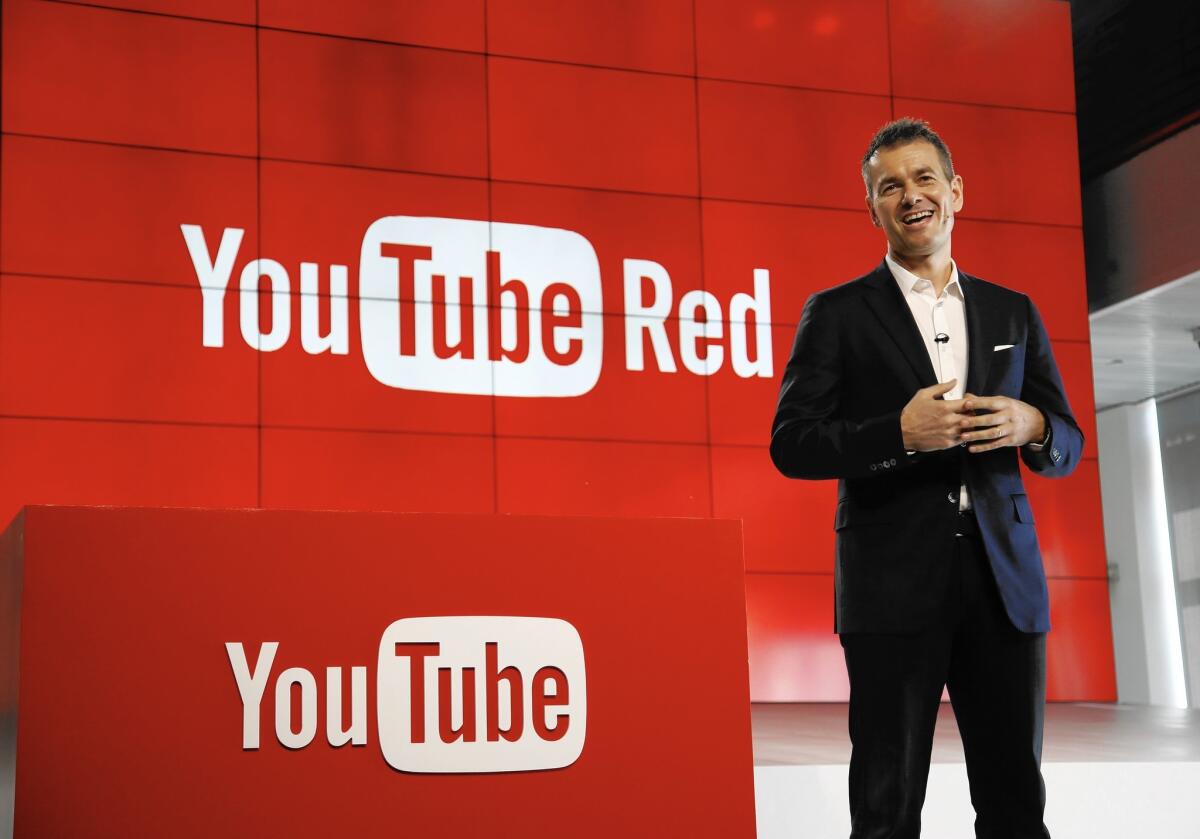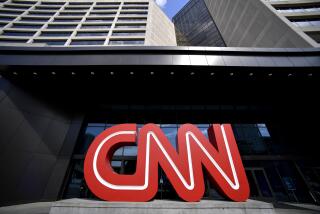YouTube launches subscription service for $9.99 a month

Next Wednesday, YouTube will begin selling $9.99-a-month subscriptions that will allow U.S. customers to watch almost everything without ads, to download videos for viewing offline and to keep content playing on a smartphone or tablet even when using a different app.
But those widely requested features arenât all that subscribers will get. The service, called YouTube Red, offers access to highly produced original shows and movies that canât be found anywhere else. Google Play streaming music will be included too.
YouTube Red is intended to turn the enormously popular Google-owned company into a profit maker, not a money loser.
Ad revenue isnât enough to meet the enormous expenses of serving billions of videos every day â even when most videos are supplied by users for free. YouTube could generate nearly $950 million annually in new revenue if just 5% of U.S. users signed up for the subscription, UBS analysts estimate.
Red marks the beginning of âa long journey,â according to YouTube.
Matthew Glotzbach, the companyâs vice president of product management, said, âBy no means would we expect to jump to tens or hundreds of millions of paying users overnight,â but there should be âstrong demandâ from the start.
Financial analysts who follow Alphabet Inc., Googleâs parent company, say YouTube could become a major profit engine. But rivals, including Facebook, Snapchat and Vimeo, are threatening its potential by stealing away both video makers and viewing time.
Growth of YouTubeâs net ad revenue in the U.S. is expected to slow rapidly over the next three years, the market research company EMarketer said in August. According to EMarketerâs calculations, worldwide net revenue will be $4.3 billion in 2015, up 41% from last year.
Yet to be determined is how the subscription model will affect an expanding generation of YouTube stars, many of whom began by filming videos in their bedrooms and elsewhere, cracking jokes, dancing and talking to the camera about everything from fashion to video games. They uploaded the videos to YouTube, attracting advertising sponsors, and, in a few cases, becoming millionaires in the process.
YouTube often places several ads on the same page as a video, and attracting millions of viewers has meant steady, growing income for video makers, who get 55% of ad revenue.
Itâs unclear how the commercial-free subscription will affect ad income, though YouTube Chief Business Officer Robert Kyncl said the âvast majorityâ of YouTubeâs subscription revenue will go to the YouTube Red content creators. Certainly, some creators will lose out on money from heavy viewers who might encounter lots of ads or be willing to pay more than $10 a month for a subscription.
With Red, YouTube also plans to create a new, subscriber-only slate of original shows and movies for its most popular (and potentially popular) video stars. The selected creators will be gambling that slicker content will broaden their viewership and fatten their paychecks.
âBigger productions cost a lot more money,â said Joey Graceffa, a YouTube star who has amassed more than 5.2 million subscribers on his channel. âThereâs no way youâll be able to make your money back just by posting it online. YouTube Red is an opportunity where we as creators get to make higher quality content for our audience.â
Graceffaâs untitled reality murder mystery series is one of a handful of new exclusive productions being offered on YouTube Red. The new content, which will begin rolling out in January, will also include highly produced content from YouTubers Lilly Singh, The Fine Bros, PewDiePie and others.
At a Wednesday news conference held at the San Brunoâs company 41,000-square-foot video production facility in Playa Vista, Kyncl emphasized that YouTube and YouTube Red have the ability to showcase a wide variety of content.
âWe realized what we should be doing is we should be amplifying and funding efforts of these incredibly talented people,â Kyncl told reporters. âWe have a built-in talent system, which doesnât exist on any other services.â
For that reason, YouTube considers its approach different from Netflixâs reliance on traditional actors, and analysts say it could be the video service of choice for younger millennials and teenagers.
Alan Wolk, senior analyst at media consulting firm the Diffusion Group, said the âbig ifâ will be whether kids can persuade their parents to pay.
âThereâs going to be millions of conversations about why do you need a subscription? Why canât you just deal with a few ads?â he said.








